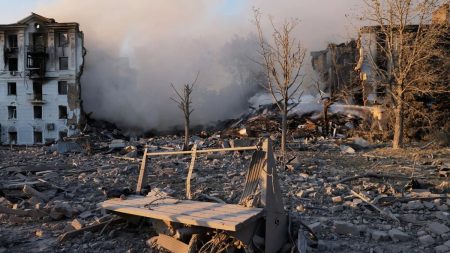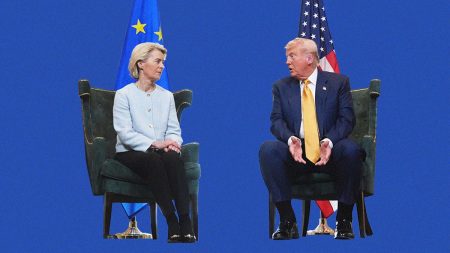Ukraine Reports Heavy Losses Among North Korean Troops Fighting for Russia in Kursk
Ukrainian military intelligence has reported significant casualties among North Korean troops deployed to support Russian forces in the Kursk region. These reports follow earlier estimates by Ukrainian President Volodymyr Zelenskyy that approximately 3,000 North Korean soldiers have been killed or wounded in the ongoing conflict. This marks the first substantial assessment of North Korean losses since Ukraine revealed Pyongyang’s deployment of an estimated 10,000 to 12,000 troops to bolster Russia’s war effort. The Ukrainian intelligence agency, known as GUR, pinpointed strikes near Novoivanovka as a key factor contributing to the high casualty count among North Korean units. Furthermore, the GUR highlighted logistical challenges faced by these troops, including supply shortages and a lack of access to drinking water, exacerbating their difficulties on the battlefield.
The fighting in Kursk began with a Ukrainian incursion in August, a move that significantly dented Russia’s perceived military dominance and forced Moscow to redirect troops from its offensive in eastern Ukraine. Whilst Russia has managed to regain some lost ground in Kursk, it has yet to fully repel Ukrainian forces. The revelation of North Korean casualties coincides with the Biden administration’s push to maximize military aid to Ukraine before President-elect Donald Trump assumes office. Zelenskyy confirmed increased US military support, emphasizing the necessity of maintaining a steady flow of aid to counter Russian offensives and bolster Ukraine’s negotiating position.
President Zelenskyy, in his nightly address, stressed the importance of the increased US military aid in achieving a “balance” in the conflict. He emphasized that the speed of aid delivery is crucial in disrupting the momentum of Russian assaults. This underscores the urgency felt by Ukraine to secure as much support as possible while the Biden administration remains in office. Concerns loom about the future of aid under the incoming Trump administration, given the President-elect’s previously critical stance on the level of US military assistance provided to Ukraine.
Meanwhile, Russian President Vladimir Putin issued a veiled threat concerning the potential use of the Oreshnik hypersonic ballistic missile against Ukraine. This new weapon was first deployed in a strike on Dnipro on November 21st. Putin acknowledged the limited number of Oreshnik missiles currently in Russia’s arsenal but emphasized their destructive power and reserved the right to deploy them if deemed necessary. He confirmed the commencement of serial production for the Oreshnik missile and reiterated plans to station some of these weapons in Belarus, a close ally of Russia.
Putin’s remarks on the Oreshnik missile serve a dual purpose. They showcase Russia’s advanced military capabilities, acting as a deterrent, while also underscoring the potential for escalation in the conflict. The deployment of such weapons to Belarus further complicates the situation, expanding the range of potential launch points and adding another layer of complexity to the geopolitical dynamics of the region. Simultaneously, Putin indicated Russia’s ongoing pursuit of a resolution to the conflict, mentioning Slovakia as a potential venue for peace talks.
The convergence of these events – heavy casualties among North Korean troops, increased US military aid to Ukraine, and Putin’s pronouncements on the Oreshnik missile – underscores the volatile and unpredictable nature of the ongoing conflict. The involvement of North Korean troops adds another dimension to the war, demonstrating Russia’s willingness to seek external military support. The future trajectory of the conflict remains uncertain, with factors such as the incoming US administration and the potential deployment of hypersonic weapons adding to the complexity of the situation. Amidst this turbulence, Ukraine continues to rely heavily on international assistance, particularly from the United States, to maintain its defense against Russian aggression.














